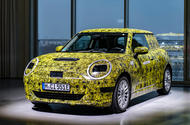The next generation Mini hatch will arrive next year with the Cooper nameplate
New hatch, now named Cooper, to get petrol and electric power; Summer 2024 launch confirmed
The reimagined Mini Cooper hatchback will provide the foundation for a “revolution” of the BMW-owned brand’s wider line-up as it pushes towards full electrification by the end of the decade.
Along with the Aceman crossover – the car maker’s first electric-only car, position to take on the upcoming Jeep Avenger – and the larger new Mini Countryman SUV, the freshened three-car range is a statement of intent for new Mini boss Stefanie Wurst, who took over the reins from Bernd Körber last February.
“It is the beginning of a new era. Mini’s 100% electric range has to start somewhere; this is a bridge for us to go fully electric,” Wurst told Autocar at a recent preview event, where the trio was shown under heavy camouflage ahead of a succession of reveals over the next 12 months (see picture below). With this new line up, the brand is targetting an electric sales split of 50% by mid-2025 (up from 15% now).
The new era will kick off with the launch of the Countryman (in both electric and ICE forms) next February, followed by the electric Cooper in May 2024, the combustion Cooper in July 2024, and the “ticks-all-the-boxes” Aceman in January 2025.
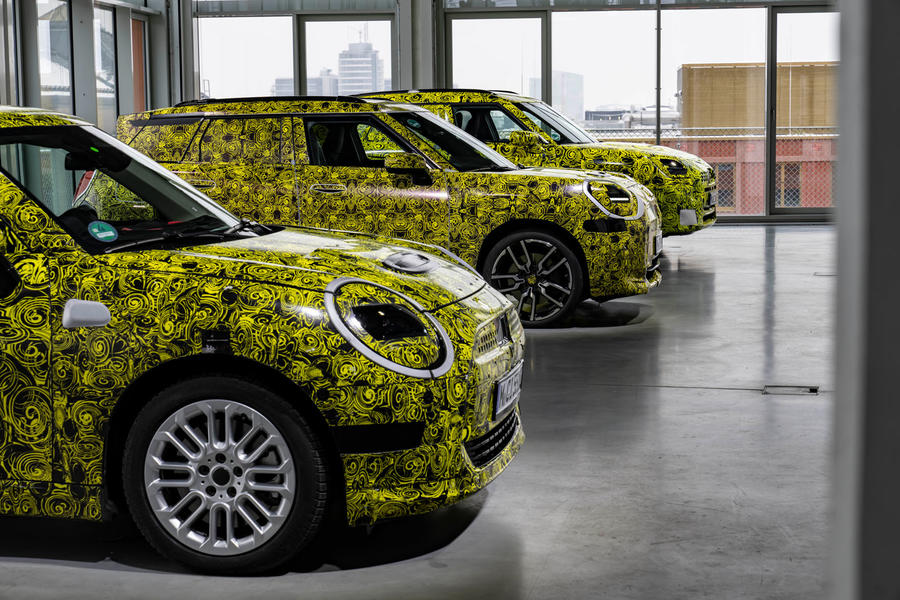
Read more: Mini Aceman EV is electric-only Clubman replacement
Read more: 2024 Mini Countryman grows and gains EV option
For Mini’s heartland supermini, the brand has taken it “back to its roots”, Wurst said, with a fresh look and ‘new’ name, being now officially called the Cooper, rather than the Mini Hatch.
A wider track, shorter front overhang, larger wheels and longer wheelbase give it a more purposeful stance over the current Mini Hatch, while still matching its 3.8m length bumper-to-bumper length. New disk-shaped daytime running lights – shared with the larger Aceman – surround bulbous headlights to give the smallest Mini a fresh face that’s more recognisably descended from BMW’s first Mini, launched in 2000
The car maker will again offer the Cooper with both electric and combustion powertrains, told apart only by the exhaust pipes or lack thereof, but only in petrol-powered form will it be sold with five doors or the option of a drop-top – neither yet previewed. A limited-edition convertible version of the current-gen Mini Electric, however, is tipped to preview a series-production successor later down the line.
“We are bringing the iconic hatch back to its roots,” said Wurst. “This is a car for mini lovers; this will be a very iconic car.”
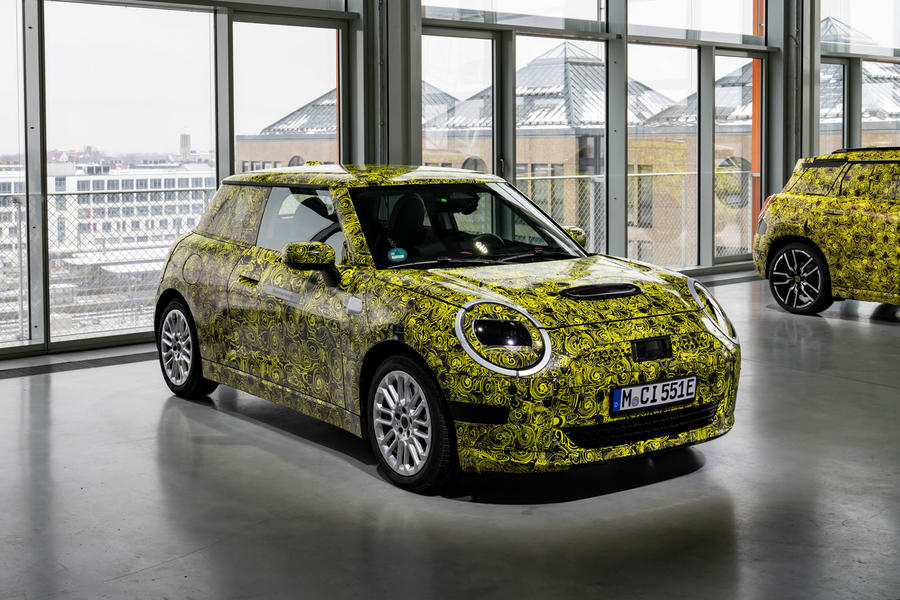
Produced in China and sitting on the all-new Spotlight EV platform created with joint venture partner Great Wall Motors, the electric Cooper will take on the Fiat 500 Electric with a pair of competitively sized battery choices: either 40kWh in the entry-level E car or 54kWh in the range-topping SE.
Range will start at 240 miles (up from the current model’s 150 miles), Wurst confirmed, with other packs giving “double what is offered with the same battery sizes now”. She added that prices will push past the £30,000 mark; the current model is available from £29,000.
As with today’s car, the standard electric Cooper will pack 181bhp, with the warmed-up SE upping that figure to 215bhp. Only two-wheel drive will be offered.
Mini has developed a soundtrack to accompany acceleration, but Wurst said it “will not be Hans Zimmer”, referencing the famous composer who devised aural effects for parent company BMW’s EVs. This sound will also change depending on drive mode.
A hot JCW version, using the same 54kWh battery as the SE, will arrive in mid-2025 – around a year after the standard cars, with a focus on power over range, suggesting upgraded motors will be fitted. Expect an output around 250bhp, and performance stats to match the recently revealed Abarth 500E and upcoming Alpine R5.

The electric car’s handling is said to have been improved courtesy of a newly developed traction control system. As reported by Autocar following an early prototype ride last year, it uses a new motor controller with the traction control system essentially built in, which allows much faster reaction times under hard acceleration.
Combustion-powered Coopers, built in Oxford, will get a choice of petrol powerplants with varying outputs – likely along with a hot JCW version at some point – though details remain under wraps at this early stage.
The combustion-powered line-up is expected to exclusively use an eight-speed automatic transmission, as the car maker confirmed to Autocar it is “99% sure” it will not offer manual options on future products.
The Cooper’s interior – which will be all but mirrored across the rest of the range – harks back to BMW Minis of old, with a focus on physical buttons extending to an actual ignition key (which will be in the EV too). A circular screen with an edge-to-edge OLED display, meanwhile, replaces the trademark mid-mounted speedo. Notably, there will be no instrument display behind the steering wheel.
Elsewhere, ‘funky’ projections on the dashboard will display information for passengers, including time and speed, for example.
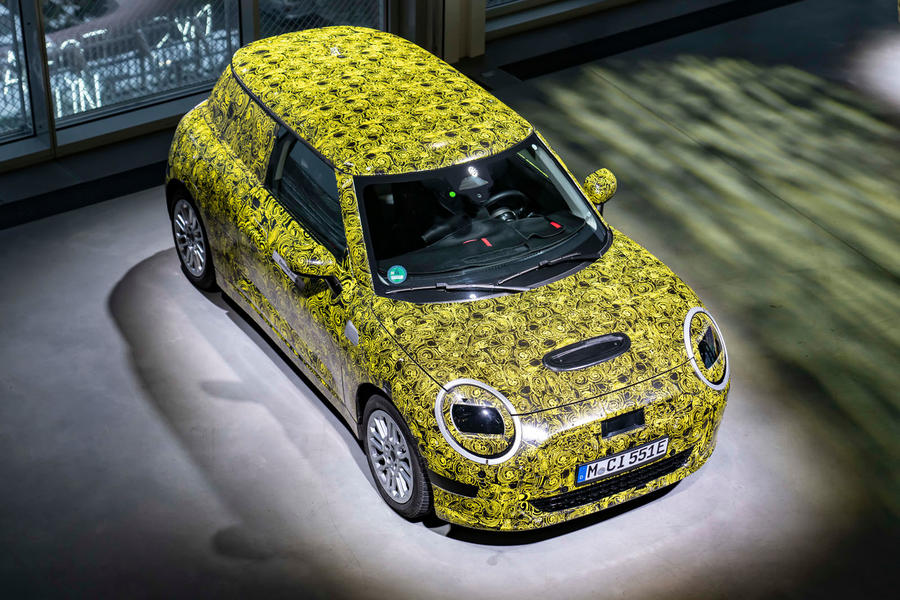
Personalisation options will continue to be a hallmark for the firm, which will offer the classic Union Jack roof, as well as other “local” customisations such as “year of the Rabbit” decals for the Chinese market.
Though it is targeting new markets and a higher electrification mix, Wurst confirmed the firm won’t be gunning for volumes, instead targeting production numbers just above that of Porsche and Land Rover, for example.
Q&A with Stephanie Wurst, Head of Mini
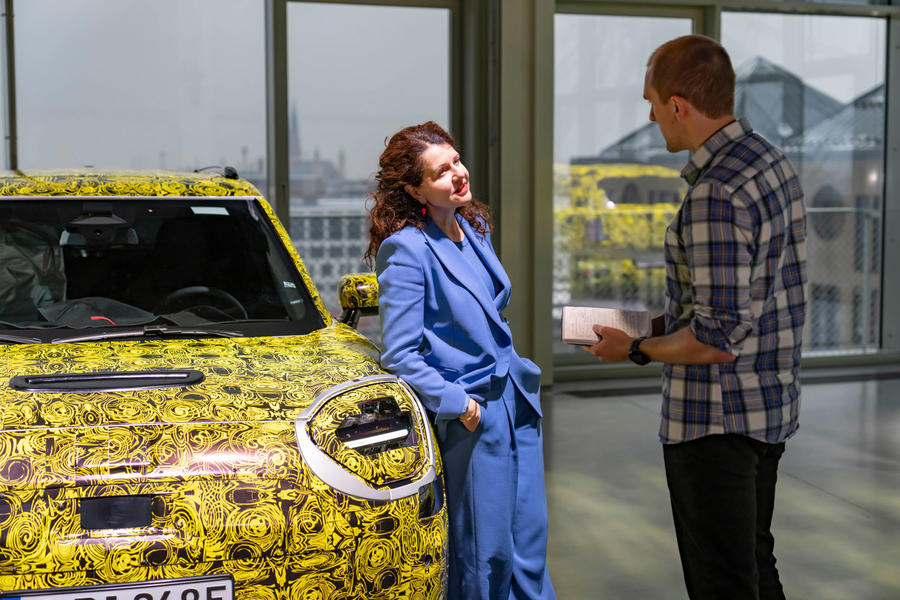
What does the ‘revolution’ mean for Mini?
“This is our gateway into 100% electric and brings us from 15% [with just the Mini Electric offering] now, to maybe a little bit more next year and then to more than 50% by the middle of this decade, then to almost 100%.”
How is Mini’s position evolving with this new line-up?
“Mini is a very democratic brand, but also a premium brand because we offer a really good product. But it’s not a brand you express status with and I think Mini is for people who don’t need to express their status with their car but express a certain state of mind.
“So I think Mini, in a way, is a very modern and contemporary product. It is not about being big or premium, it is about a certain lifestyle that you have; you take things more easily, you’re not tense about what your income status is, what kind of hierarchy level you work at. It is more a state of mind.”
How do you want people to see Mini in the EV era?
“Mini is fun; it’s still go-karting. It’s always been a very friendly car. A Mini has to be easy and simple and easy going; anything too complex is actually not Mini. So I think it’s about preserving what you have, for example, the centre display, really bringing it into [the modern day] with gamification and a brilliant display, but not straying too far away from the brand.”
Why do you think the Aceman will be your bestseller?
“Because it offers everything. [Firstly], you have five doors, so if I had a family or sometimes passengers, or other things to transport, then this is the right car. It’s only electric, which is the future of what we foresee right now.
“And it’s a crossover which a lot of people love because it’s a little bit more rugged and it’s more quirky. And it’s like ‘I could drive this off road if I wanted but I don’t have to – that kind of thing’.”
Why launch the Aceman instead of a five-door Cooper Electric?
“I think the Aceman has more potential. And I think this car would look great in Asia, in China, because they are less traditional. Also, we are still talking about the first generation of car drivers – people my age – or maybe older, maybe younger – whose parents didn’t drive. It’s the first, and so they don’t have this heritage going on for them – they’re less traditionalist.”
Source: Autocar
